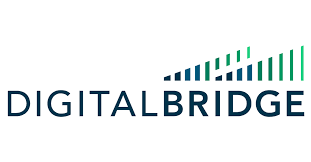Connect (X) Coverage
Convergence is an important part of the future of this industry, and DigitalBridge Group (NYSE: DBRG) has created the prototype company for making that future a reality, according to “The Future of Digital Infrastructure,” a session that took place last week during the WIA Connectivity Expo, held in Denver.
“One thing we like about DigitalBridge is they are bringing the management teams of Boingo, Zayo, and Landmark Infrastructure Partners and others in place and operating and letting them work together as a team,” said Rick Prentiss, Managing Director, Director of Telecommunications Services Research, Raymond James & Associates, who moderated the panel.
Digital Bridge’s goal is to become the Blackstone of digital infrastructure, Jacky Wu, Executive Vice President and Chief Financial Officer DigitalBridge told the audience. So far, it has 24 different portfolio companies and $50 billion in assets under management across fiber, small cells, cell towers, and data centers. “We go very wide and far in our investments, and it is becoming more and more wide when we talk about applications,” he said.
Wu said that because of technological convergence DigitalBridge can bring multiple networks together to fill the needs of the customer. “If we are doing a bid for DISH or Verizon or for Amazon and we want to deliver three or four different technologies, we find that it’s better to have the best teams and the best companies led by the best people who drive what they do best,” he said.
Zayo Group Holdings, Inc. was acquired by affiliates of Digital Colony Partners, now known as DigitalBridge and the EQT Infrastructure IV fund in May of 2019. Brian Daniels, senior vice president, Strategic Networks, Z5G, Zayo, said that being part of the DigitalBridge family means partnership opportunities that allow it to provide the bandwidth needed by its customers.
“We’re really starting to see that convergence as the cloud touches mobility. And from Zayo’s perspective all things are connected to fiber, whether it’s a data center, a tower, a satellite farm, for the likes of the LEO and the GEO [satellites] of the world,” Daniels said.
Boingo Wireless has been a portfolio company of DigitalBridge for a year. Mike Finley, CEO, Boingo Wireless, said he couldn’t be happier with the relationship. “Our senior management has spent a long time with the company and has done a great job, and we wanted to keep that going,” Finley said. “Being purchased by DigitalBridge has allowed us to be a little more focused, if you will, and really zero in on what we wanted to go after on the converge side.”
DigitalBridge, which is public, has taken Zayo, Boingo Wireless, and other portfolio companies from public to private. Therefore, even though they are private companies they get access to capital at the same cost as a public company. Finley said there are many distinct advantages to the company’s new status. Without the pressure of investor scrutiny every 90 days, the company can make longer term investments. “We like risk. The bigger the risk, the bigger payoff. Calculated, of course. But being able to do that as a private company is a lot easier,” he said.
The global digital infrastructure investment model is the best because it allows funding through the formation of different pools of capital, according to Wu. “So, I don’t have to say to a portfolio company that they can’t go and realize a piece of their plan, because costs ran up,” he said. “I’ve got different funds I can tap for each company or a multitude of companies at the same time. They are not going to be shackled.” DigitalBridge is also encouraging cross pollination between real estate funds and digital investment funds, he added.
In the current environment of rising interest rates and rising inflation, DigitalBridge looks for target returns, especially in its flagship funds, in the mid-teens in the U.S., Europe and Japan. In Southeast Asia and Latin America, it demands returns closer to 20 percent.
By J. Sharpe Smith, Inside Towers Technology Editor





Reader Interactions